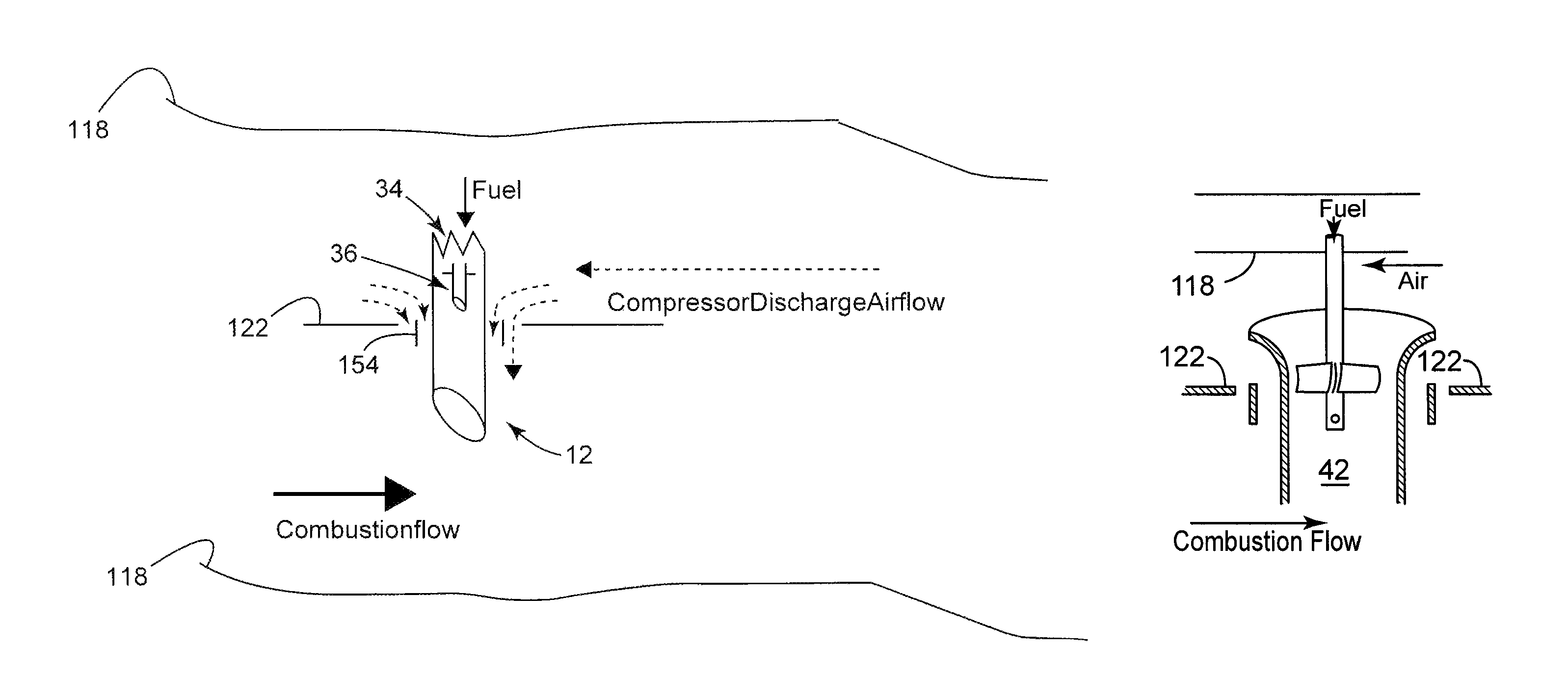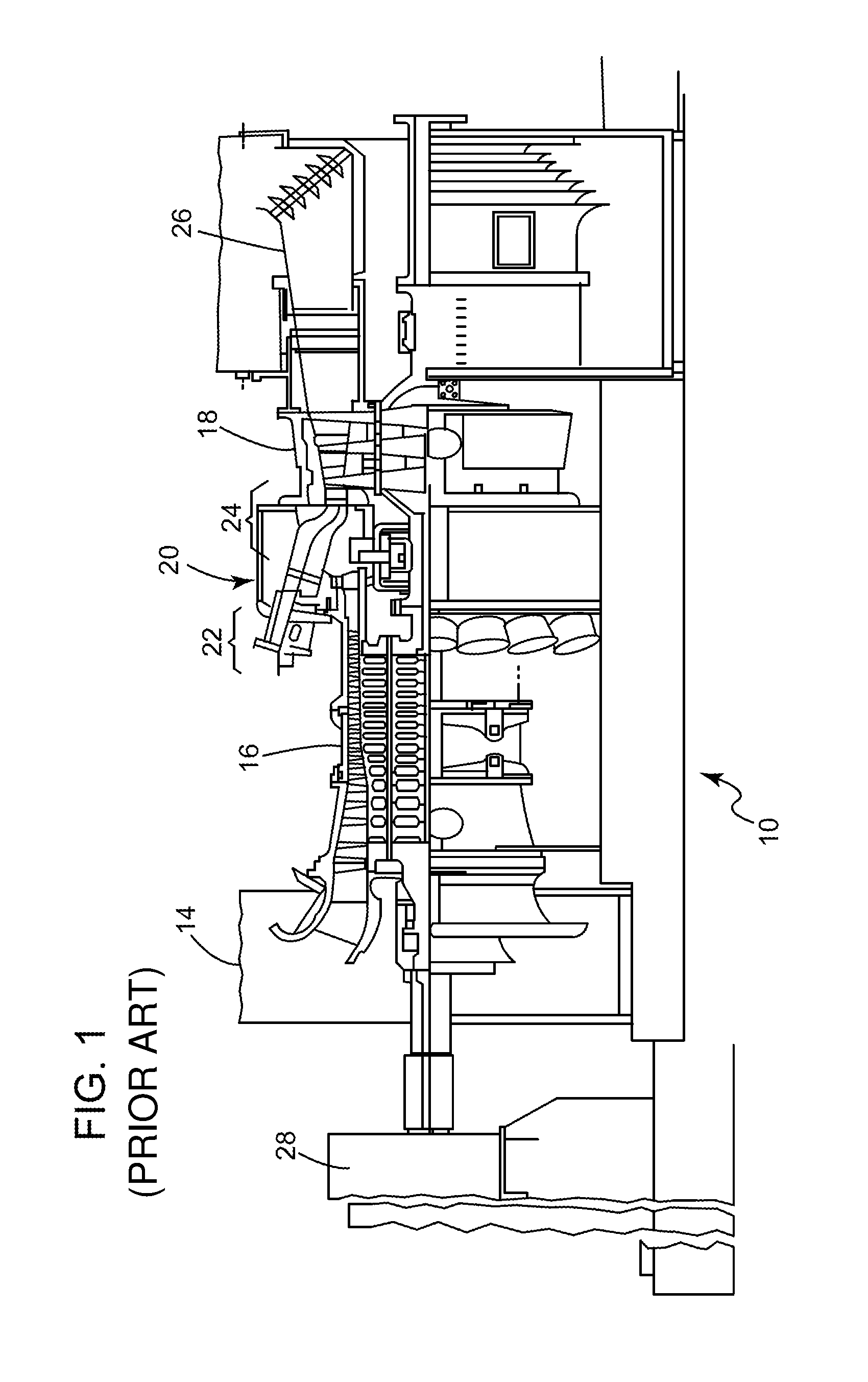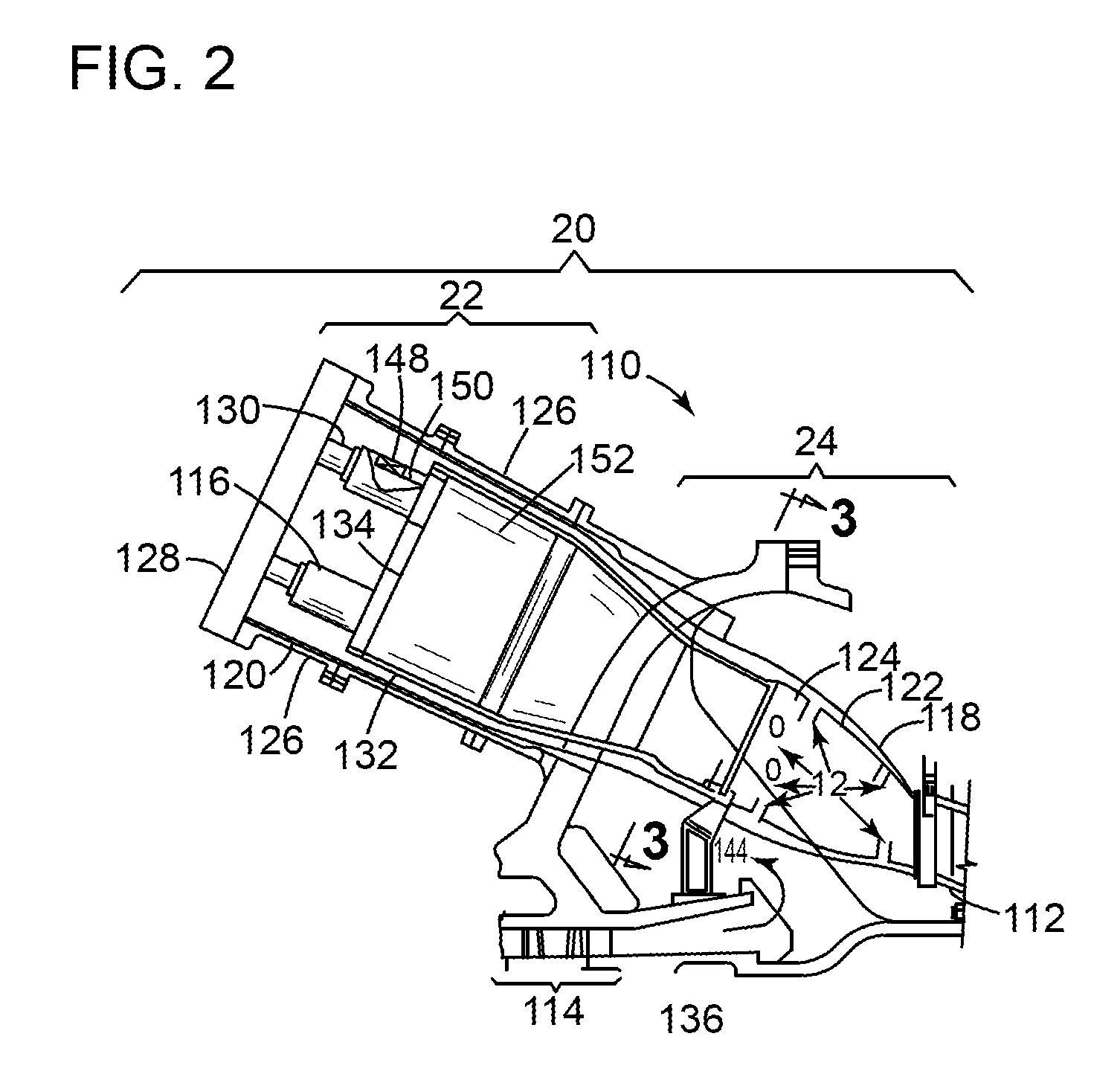Secondary combustion system for reducing the level of emissions generated by a turbomachine
a turbomachine and emission reduction technology, applied in the field of combustion systems, can solve the problems of significant nox formation, high operational cost, and significant energy consumption of some turbines and combustion hardware, and achieve the effect of reducing a level of emissions
- Summary
- Abstract
- Description
- Claims
- Application Information
AI Technical Summary
Benefits of technology
Problems solved by technology
Method used
Image
Examples
Embodiment Construction
[0024]Certain terminology is used herein for convenience only and is not to be taken as a limitation on the invention. For example, words such as “upper,”“lower,”“left,”“front”, “right,”“horizontal,”“vertical,”“upstream,”“downstream,”“fore”, and “aft” merely describe the configuration shown in the Figures. Indeed, the components may be oriented in any direction and the terminology, therefore, should be understood as encompassing such variations unless specified otherwise.
[0025]The following discussion focuses on an embodiment of the present invention integrated with a turbomachine, such as, but not limiting of, a gas turbine. Other embodiments of the present invention may be integrated with other combustion systems that operators may desire a reduction the level of emissions. For example, but not limiting of, the other combustion systems may include a kiln, a furnace, a fired boiler, or the like.
[0026]An embodiment of the present invention provides a method of operating a combustion...
PUM
 Login to View More
Login to View More Abstract
Description
Claims
Application Information
 Login to View More
Login to View More - R&D
- Intellectual Property
- Life Sciences
- Materials
- Tech Scout
- Unparalleled Data Quality
- Higher Quality Content
- 60% Fewer Hallucinations
Browse by: Latest US Patents, China's latest patents, Technical Efficacy Thesaurus, Application Domain, Technology Topic, Popular Technical Reports.
© 2025 PatSnap. All rights reserved.Legal|Privacy policy|Modern Slavery Act Transparency Statement|Sitemap|About US| Contact US: help@patsnap.com



